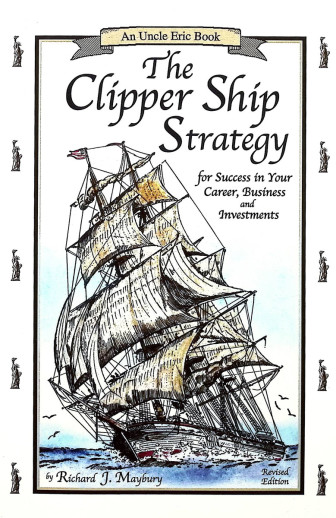We use cookies to make your experience better. To comply with the new e-Privacy directive, we need to ask for your consent to set the cookies. Learn more.
Clipper Ship Strategy
In this second sequel to Whatever Happened to Penny Candy, Richard Maybury gets down to the specifics of running a business and how to protect yourself and your business from government intrusion. This book would be most helpful for current or future entrepreneurs, but would also be helpful for an employee making career decisions. Cathy Duffy (CHECM - Jr/Sr High) says that after reading this book, "you will know more about the way business really works than many business college graduates." 269 pgs, pb.
The Clipper Ship Strategy by Richard J. Maybury explains how government's interference in the economy affects business, careers, and investments. It's a practical nuts-and-bolts strategy for prospering in our turbulent economy.
Conventional wisdom says that when the government expands the money supply, the money descends on the economy in a uniform blanket. This is incorrect. The money is injected into specific locations causing hot spots or "cones."
In The Clipper Ship Strategy Mr. Maybury explains a system for tracking and profiting from these cones, for locating genuine money-making opportunities, and for avoiding those which are false or dangerous. Includes step-by-step instructions, and clever illustrations that make the system easy to understand. Explains how to cope with recessions and avoid unemployment.
Using the epistolary style of writing (using letters to tell a story), Mr. Maybury plays the part of an economist (Uncle Eric) writing a series of letters to his niece or nephew (Chris). Using stories and examples, Mr. Maybury gives interesting and clear explanations of topics that are generally thought to be too difficult for anyone but experts.
Mr. Maybury warns, "beware of anyone who tells you a topic is above you or better left to experts. Many people are twice as smart as they think they are, but they've been intimidated into believing some topics are above them. You can understand almost anything if it is explained well."
The Clipper Ship Strategy is the second sequel to Whatever Happened to Penny Candy? and should be read after The Money Mystery.
| Product Format: | Softcover Book |
|---|---|
| Brand: | Bluestocking Press |
| Author: | Richard J. Maybury |
| Grades: | 10-AD |
| ISBN: | 9780942617375 |
| Length in Inches: | 8.5 |
| Width in Inches: | 5.5 |
| Height in Inches: | 0.625 |
| Weight in Pounds: | 0.8563 |

